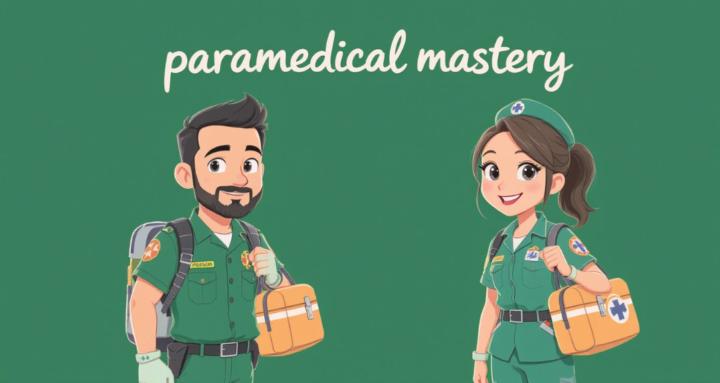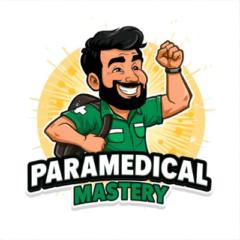
Write something
Pinned
The Power of Case-Based Discussions: Learning Through Real Experience
Case-based discussions (CBDs) are one of the most effective ways to bridge the gap between theory and real-world practice. By exploring real or simulated cases together, we move beyond textbook knowledge to understand how decisions are made, what challenges arise, and how different approaches can lead to different outcomes. Why they’re important: 🧠 Deeper understanding: Discussing actual cases helps solidify knowledge and reveal nuances that standard teaching might miss. 🤝 Collaborative learning: They encourage sharing perspectives and learning from each other’s reasoning. 🔍 Reflective practice: Reflecting on cases helps us recognize what went well, what could be improved, and how to apply those lessons next time. 📈 Better decision-making: Working through complex, real-world scenarios builds confidence and clinical (or professional) judgment. If you’ve been part of a valuable case-based discussion, what made it impactful for you? Share an example or insight below — it could inspire how others approach their next case discussion.
3
0
Female with POTS in a walk in centre
Here is an example I have from my recent practice in a walk in Centre. I want you to think what would you do for this patient in your own area of practice. What would you consider? Would you treat this patient? What testing would you want to do for this patient? This is the history I had taken I will give basic observations • Patient: Sore throat. Getting worse. Four day history. Having to sit up as she is coughing due to feeling short of breath. Currently does not feel short of breath. Currently talking in full sentences without gasping for breath. Short of breath on exertion. Headache not worse on lying, coughing or sneezing, does not wake up because of a headache, gradual onset, no aura, no blurred or disturbed vision, no photophobia. Fever. Coughing up phlegm Occasionally green. No blood. No weight loss. No night sweats. No dysphagia, No dysarthria, No dysphasia, No unilateral weakness, No incontinence, No facial palsy. Bowel and urine normal. Denies chest or upper back pain. Slight lightheadedness. No recent travel. No immobilisation to note. GCS 15 Alert. Normal pallor. Not pregnant has had testing 3 weeks ago and has copper coil inserted. Patient states 120 pulse is normal for her. No limb swelling to note. Lives with family. Vapes 5-6 times a day. Very rarely drinks alcohol. Has a history of POTS, Hypotension, Low Mood. Takes Sertraline and Fludrocortisone. • Vital Signs and Examination: o Blood Pressure: 131/94 mmHg standing, 127/90 mmHg sitting. o Heart Rate: 120 bpm (reported as normal for the patient). o Respiratory Rate: 19 breaths/min. o SpO2: 99%. o Temperature: 36.9°C. What do we do next from here?
Best Ways to Explain Procedures to Anxious Patients.
Communication with patients who are anxious is very important and challenging parts of our careers in healthcare. How do we then explain these procedures which may have an impact on their experience, cooperation, and general outcome. Ill go through some of the key strategies that I have learned over the years from my colleagues and from some research. 1) Use simple and clear language- Avoid any complicated words or medical jargon, keep it all simple as it you’re explaining to your family. An example of this would be instead of saying you will “use an iv catheter”, replace this with “I’m going to use a small tube in your arm to give you medication”. 2) Break it down Step by Step- Anxious patients will become overwhelmed by not knowing what is happening next. Letting them know how it will start, and finish gives the patient a little bit of preparation and can reduce the uncertainty. 3) Be honest and reassuring- Don’t hide information from the patient, frame it gently. If discomfort is possible, it is better to let them know and explain how you will manage that discomfort. “You may feel a small prick, but it will only last a few seconds” 4) Use visuals or demonstrations- Some people understand better once they have seen it. Maybe diagrams, models or show them the equipment. 5) Allow them to ask questions and listen activity- This is important as it lets them build rapport with you and allows you to build that empathy towards that fear 6) Offer Coping Strategies- Simple things like even breathing techniques, focusing on points of the room, or having a support person (family member). Giving them a choice helps to reduce anxiety. 7) Show empathy and Support- A calm tone, warm body language and validation can help “Its normal to be scared in this situation” it can go a long way to ease the patient. Remember our words can either make the fear worse or calm them. Taking those few extra seconds can be the difference between a combative anxious patient and one who will comply with you to build a better patient experience.
2
0
CPD Tip: Try a New Simulation Scenario This Week 🚑
Simulation isn’t just for students, it’s one of the most effective ways for paramedics at any level to sharpen clinical skills and decision-making in a safe environment. Running through new or unfamiliar scenarios helps build muscle memory, improve teamwork, and boost confidence when facing real emergencies. It also gives you space to make mistakes, reflect, and refine your approach without risk to patients. Whether it’s a complex trauma, a paediatric arrest, or a challenging communication scenario, pushing yourself beyond the routine can make a real difference when seconds count. 📚 What scenario would you like to practise next?
1
0
Why Paramedics Should Keep Learning Beyond the Guidelines
Clinical guidelines are a vital foundation for safe and effective practice which are built from evidence and give us a clear framework for decision-making. But they are not designed to cover every situation we encounter. Real patients don’t always follow the textbook. Comorbidities, complex presentations, and unpredictable environments mean paramedics often need to think critically and adapt. Learning beyond the guidelines through research, case reviews, CPD, and reflective practice builds deeper understanding and sharper clinical judgement. 📖 This ongoing learning helps us recognise subtle signs earlier, tailor care to individual needs, and deliver the best possible outcomes, even in unusual or challenging cases.
0
0
1-6 of 6

skool.com/paramedical-mastery
A group committed to supporting your growth not only as a paramedic or clinician, but as a well-rounded student and healthcare professional.
Powered by

